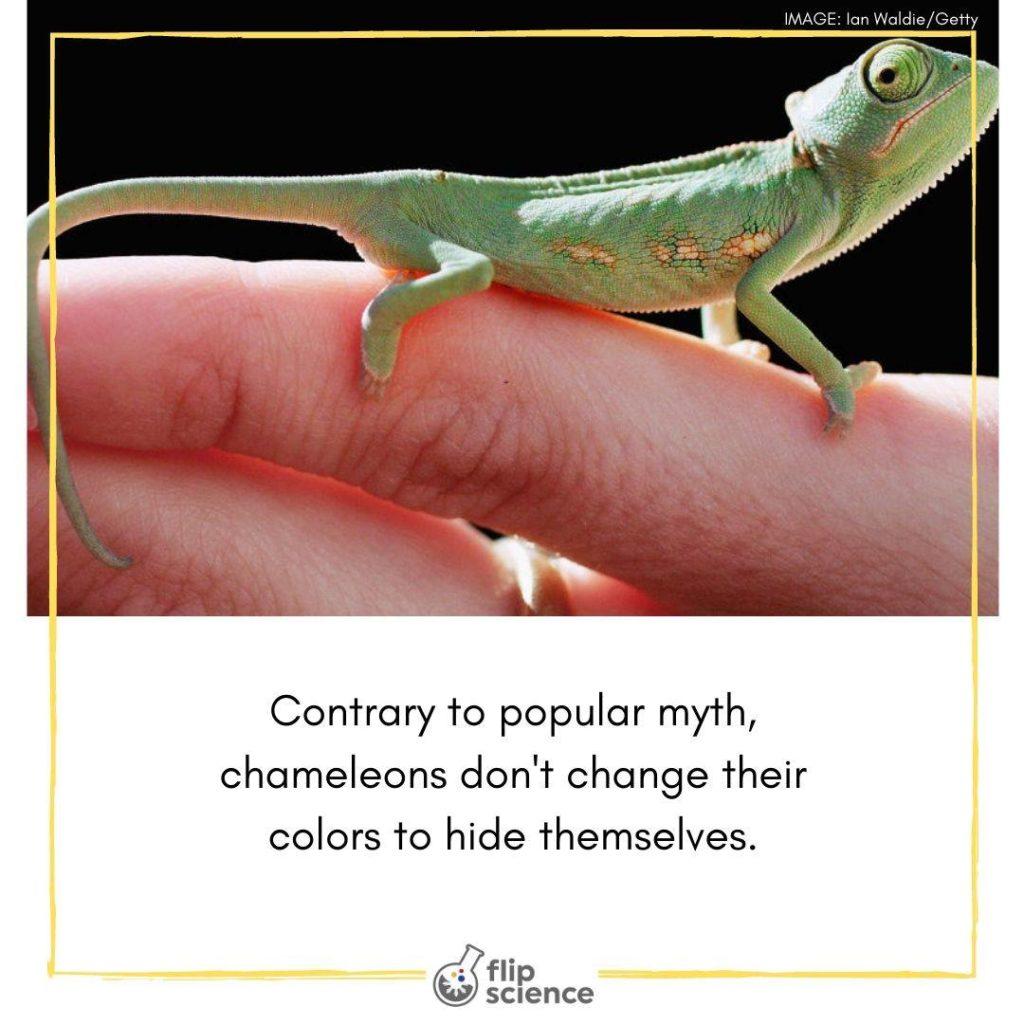FlipFact of the Day: Despite their usual portrayal in pop culture, chameleons don’t change colors for camouflage. They also cannot copy every single detail of their environment to “blend in.” In fact, it’s more accurate to think of them as living, breathing “mood rings.”
When chameleons’ moods shift, their iridophores (the cells under their transparent outer skin) contract or expand. As a result, they reflect longer wavelengths of light (and thus, brighter hues such as red, yellow, and orange). Some researchers believe that body temperature regulation may also be a factor. However, there isn’t enough evidence to support this.
In other words, if you put a chameleon on your table, it won’t magically blend in with your tablecloth and become invisible all of a sudden. (Yes, those YouTube videos are fakes.)
Today’s Science History Milestone: On July 31, 1971, Apollo 15 astronaut Dave Scott became the first person to drive a vehicle on the Moon.
Still remember your 5th-grade science classes? Test your knowledge and see if you still remember these facts and fundamental concepts in human anatomy, biology, botany, and other branches of science. Click here to try the “Are You Smarter Than A Pinoy Fifth-Grader” Challenge.
Follow the hashtag #FlipFacts on Facebook and Instagram to get your daily dose of science trivia!
References
- https://animals.howstuffworks.com/animal-facts/chameleons-change-colors.htm
Author: Mikael Angelo Francisco
Bitten by the science writing bug, Mikael has years of writing and editorial experience under his belt. As the editor-in-chief of FlipScience, Mikael has sworn to help make science more fun and interesting for geeky readers and casual audiences alike.







